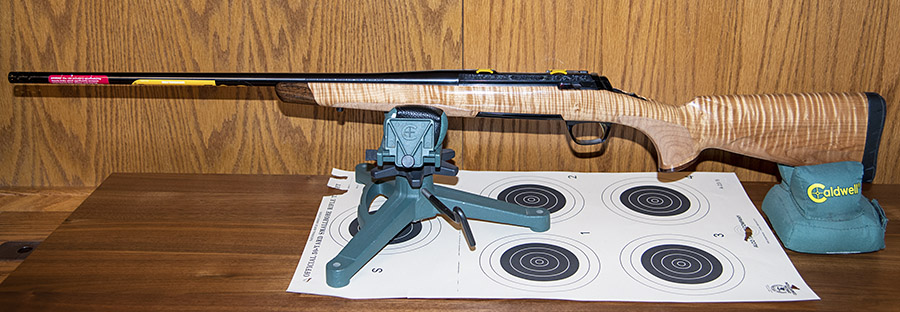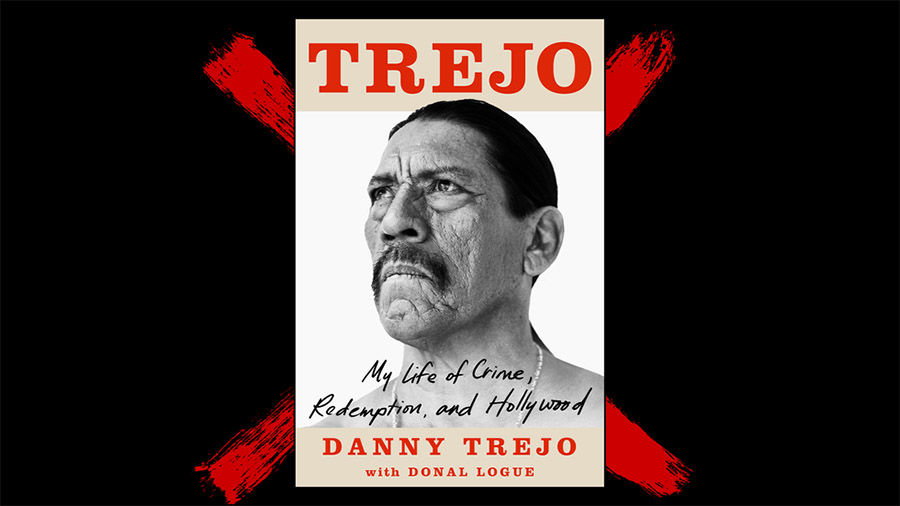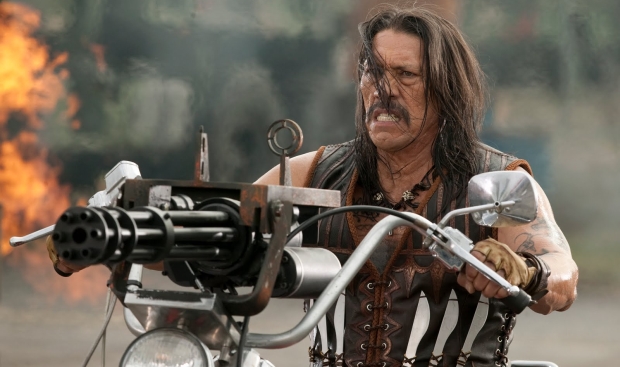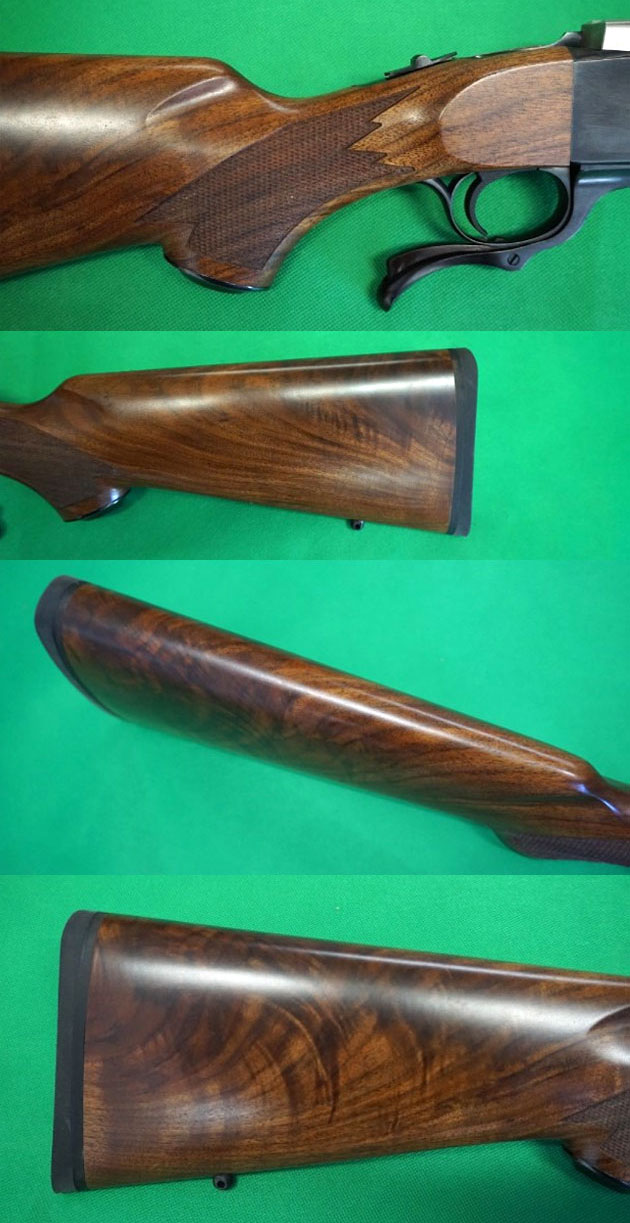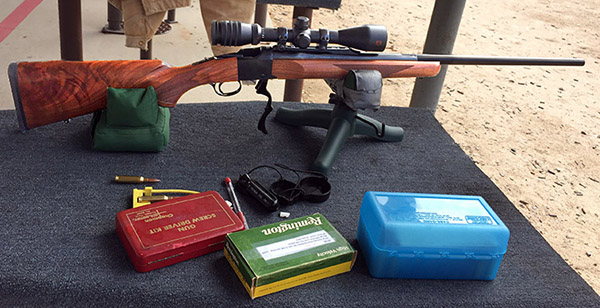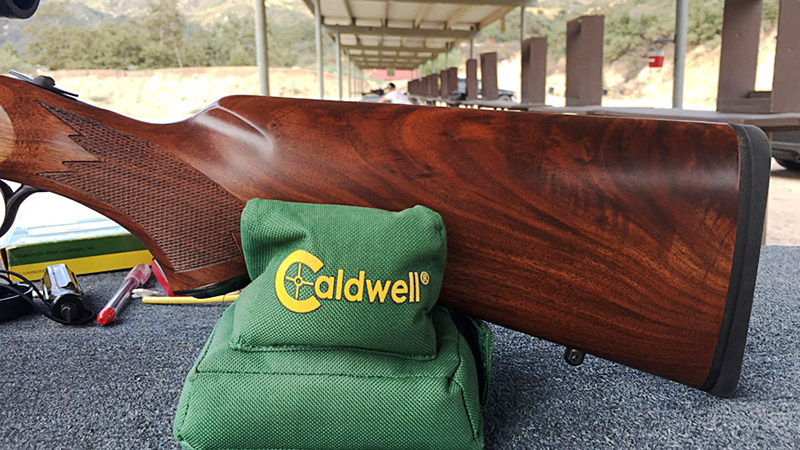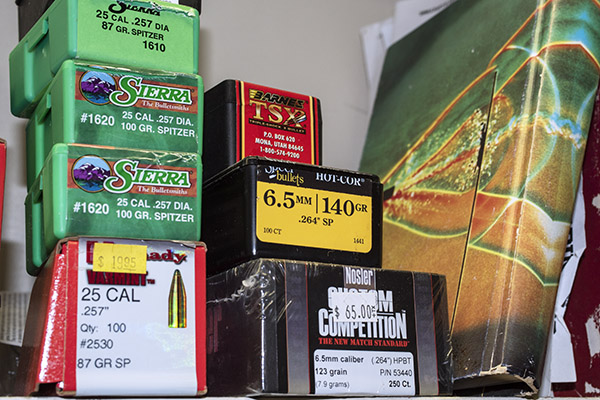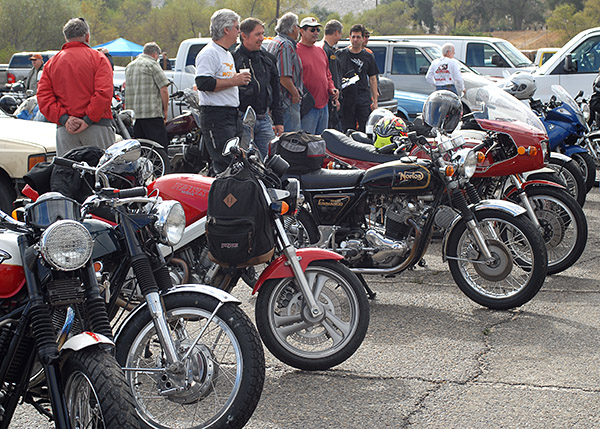Yeah, I’ve become a 6.5 Creedmoor believer. This is a superior cartridge and accuracy seems to just come naturally with it.
The rifle you see above is a maple-stocked Browning X-Bolt. It’s from a limited run and it sure is good looking. I bought it from a small shop in in Lamar, Colorado, when I was there on a recent secret mission. The dealer wouldn’t ship it to California so it had to go the long way around: Lamar, Colorado, to Raleigh, North Carolina, to Riverside, California, and then finally to me after I waited the obligatory 10-day cooling off period (I have to be the coolest guy in California; I’ve cooled off so many times). California has extra requirements for shipping guns to FFL holders here and the dealer in Colorado didn’t want to mess with our nutty requirements. The reshipper guy in North Carolina makes a living doing this (who says government can’t stimulate trade?). It’s crazy, but that’s our leftist Utopia here in the Golden State. I sometimes wonder if our firearms regs have ever actually prevented a crime.
Anyway, to leave the politics behind, a couple of weeks ago when I was on the range a good friend gave me a box of once-fired 6.5 Creedmoor brass another shooter had left behind. That was a sign, and I figured I’d reload it for the first range session with the new Browning.

I already had stocked up on 6.5 Creedmoor bullets. I am probably on every reloading retailer’s email list and I get a dozen advertising emails every day. With components being in short supply nationally, if I see anything I might use I pick it up. Like the maple Browning you see above, the time to buy something that’s hard to get is when you see it (to quote Mike Wolfe).
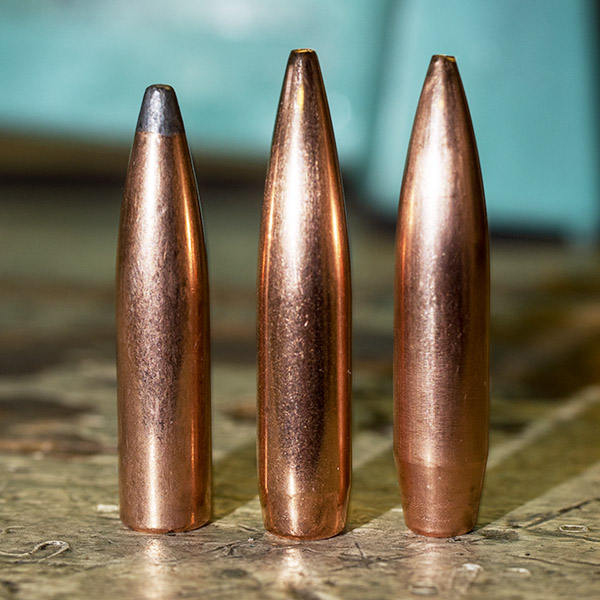
From everything I’ve read and my limited experience loading for a Ruger 6.5 Creedmoor No. 1 (see my recent blog on the 6.5 Creedmoor Ruger No. 1), IMR 4350 propellant is the secret sauce for accuracy with this cartridge. I had some under the reloading bench and it got the nod for this load session.

IMR 4350 is an extruded stick powder, and it doesn’t meter consistently through the powder dispenser. I use an RCBS trickler I’ve had for 50 years. The idea is that you drop a charge into a loading pan, it goes on the scale, and then you trickle in extra powder (a particle or two) at a time with the trickler to arrive at the exact weight.
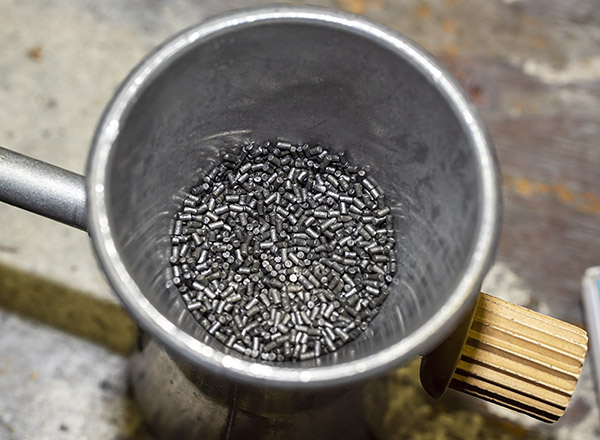
I have a set of Lee dies I use for the 6.5 Creedmoor. It’s Lee’s “ultimate” four-die set, which includes a full length resizing die and decapper, a neck-size-only die and decapper, the bullet seating die (which includes a roll crimping feature), and a factory crimp die. Lee dies are inexpensive and they work well. Their customer service is superb, too. I full length resized this batch and I didn’t crimp. I’ll experiment with that later. For this load, I just wanted to get pointed in the right direction. The refinements will come later (if they are needed).
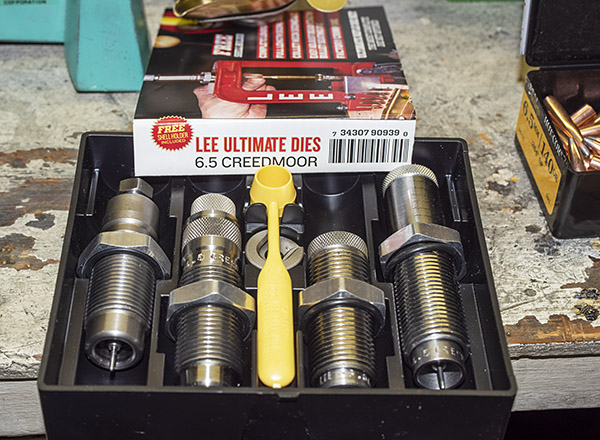
After charging the primed cases with IMR 4350, I seated the bullets. The long, heavy-for-caliber bullets and the relatively short 6.5 Creedmoor brass make for cartridges that look like hypodermic needles. It’s good looking ammo.

So how did the new 6.5 Creedmoor do? It was very cold and very windy when I went to the range. I had hoped for more pictures of the Browning in the daylight but it was so windy I didn’t want to chance the photos (I was afraid the wind would knock the rifle out of its Caldwell rest). There was only one other shooter out there; most folks were probably staying warm at home. I shot at 100 yards and the wind notwithstanding, this puppy can shoot. Here are the results from my first box of reloaded ammo…there are a few erratic groups, but they were due to me and the wind.
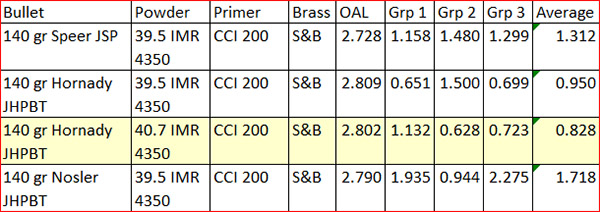 Here’s what the best groups looked like:
Here’s what the best groups looked like:
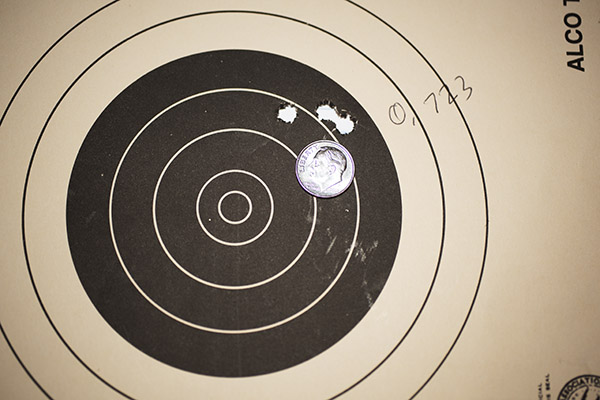
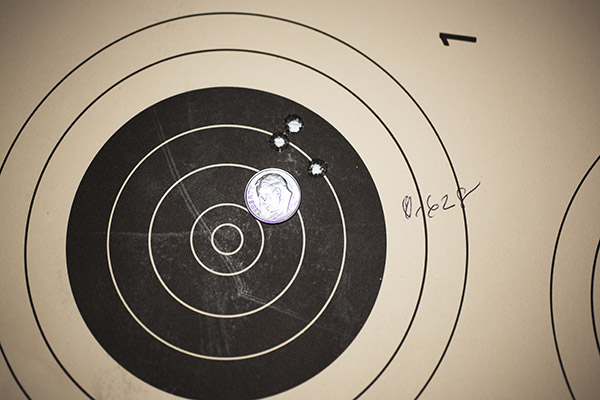

The Browning likes the 140 grain Hornady jacketed hollowpoint boattail bullets, which is good because I have a couple of boxes of those. Going up to 40.7 grains of IMR 4350 helped a bit. After I fired these rounds, I could chamber a fired case without it sticking, so I am going to load another 20 cartridges that I will neck size only.
The scope I bought for this rifle is a Vortex 4×12 (it’s made in China). This was the first time I used a Vortex. The optics are very clear. Because of the wind and the cold temperatures I didn’t try to adjust the parallax; I just set the parallax adjustment at 100 yards and shot (I’ll adjust the parallax next time, assuming the weather cooperates). The Vortex click adjustments for windage and elevation are not as tactilely distinct as they are on a Leupold or a Weaver. The clicks are squishy and I had to look at the turret graduations to keep track. Eh, it’s a $170 scope. You get what you pay for. Sometimes.
The recoil on the 6.5 Creedmore is moderate; maybe a little less than a .308. The Browning has a removable muzzle brake, and that helps.
The maple Browning (especially this one) really stands out. There were three rangemasters and one other shooter on the range the day I shot it. Everyone stopped what they were doing to look at the rifle. They thought it was a custom gun. This Browning X-Bolt is a beautiful firearm. And it shoots, too.
Never miss an ExNotes blog: Sign up here for free!
More gun stories? You bet!
Hey, don’t forget to click on the ads appearing on this page….it’s how we get paid!

